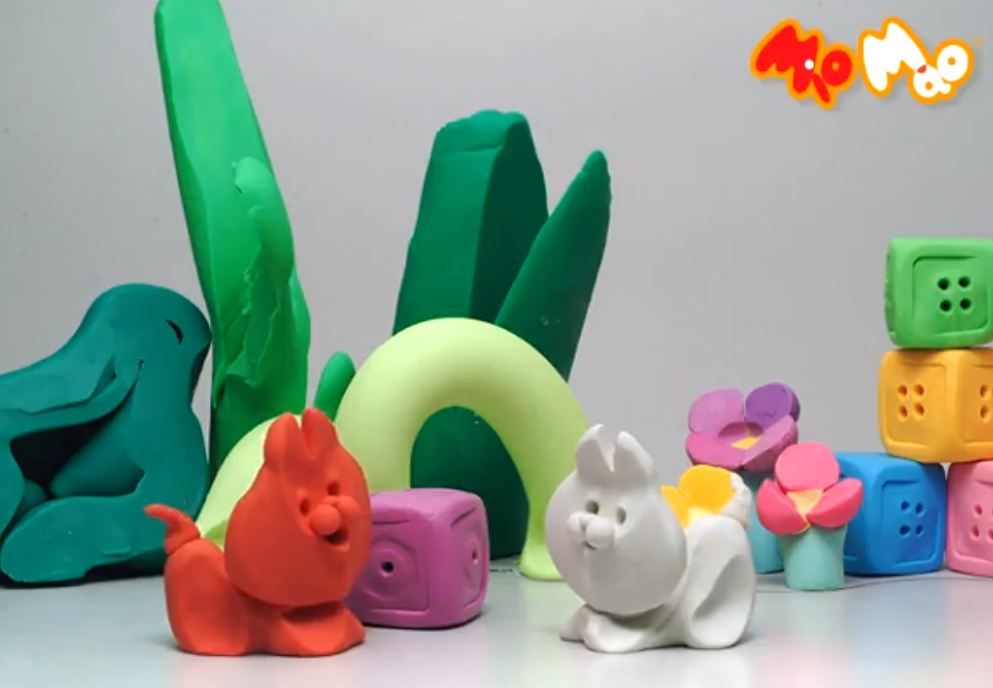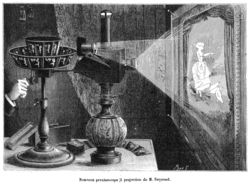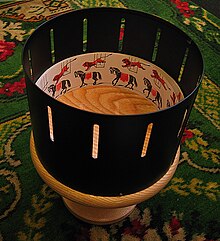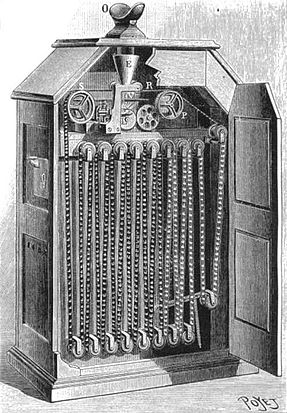 small films Ivor the Engine is a British children's animation by Oliver Postgate and Peter Firmin's Smallfilms company.Several
very popular series of short films were made using stop-motion animation, including The
Clangers, Noggin the Nog,
and Ivor the Engine. Another Smallfilms production, Bagpuss, came top of a BBC poll to
find the favourite children's programme.
small films Ivor the Engine is a British children's animation by Oliver Postgate and Peter Firmin's Smallfilms company.Several
very popular series of short films were made using stop-motion animation, including The
Clangers, Noggin the Nog,
and Ivor the Engine. Another Smallfilms production, Bagpuss, came top of a BBC poll to
find the favourite children's programme.  Alexander The Mouse (1958) The Journey Of Master Ho (1958) Ivor the Engine (1959–1963) Noggin
the Nog (1959-1965) Pingwings (1961–1964) Pogles' Wood (1966–67)Clangers (1969–1972)Bagpuss (1974)Clangers election special: Vote For Froglet (1974)What-A-Mess (1980)Tottie:
The Story of a Doll's House (1984)Pinny's House (1985) . Based on concepts which mostly originated with Postgate, Firmin did
the artwork and built the models, while Postgate wrote the scripts, did the stop motion filming and many of the voices. After Postgate's death in December 2008 Smallfilms was inherited by his son Daniel Postgate. Also, Universal took the distribution rights to the works of Smallfilms. Any such agreement does not include the materials Oliver published with The Dragons Friendly Society you can see most of the work on you tube, DVDs, and videos.
Alexander The Mouse (1958) The Journey Of Master Ho (1958) Ivor the Engine (1959–1963) Noggin
the Nog (1959-1965) Pingwings (1961–1964) Pogles' Wood (1966–67)Clangers (1969–1972)Bagpuss (1974)Clangers election special: Vote For Froglet (1974)What-A-Mess (1980)Tottie:
The Story of a Doll's House (1984)Pinny's House (1985) . Based on concepts which mostly originated with Postgate, Firmin did
the artwork and built the models, while Postgate wrote the scripts, did the stop motion filming and many of the voices. After Postgate's death in December 2008 Smallfilms was inherited by his son Daniel Postgate. Also, Universal took the distribution rights to the works of Smallfilms. Any such agreement does not include the materials Oliver published with The Dragons Friendly Society you can see most of the work on you tube, DVDs, and videos.Oliver Postage
 Oliver
postage was an English animator, puppeteer and writer. He was the creator and
writer of some of Britain's most popular children's television programmes. Pingwings, Pogles' Wood, Noggin the Nog, Ivor the Engine, Clangers and Bagpuss,
were all made by Smallfilms, the
company he set up with Peter
Firmin, and were shown on the BBC between the 1950s and the 1980s, and
on ITV from 1959 to the present day. In a 1999
BBC poll Bagpuss was voted the most popular children's
television programme of all time. Setting up
their business in a disused cowshed at Firmin's home in Blean near Canterbury, Kent, Postgate
and Firmin worked on children's animation programmes. Based on concepts which mostly originated with
Postgate, Firmin did the artwork and built the models, while Postgate wrote the
scripts, did the stop
motion filming and many of the voices. Smallfilms was therefore able to produce two minutes of film per day.They are shown on DVD’s, videos and you tube it is still going on today
Oliver
postage was an English animator, puppeteer and writer. He was the creator and
writer of some of Britain's most popular children's television programmes. Pingwings, Pogles' Wood, Noggin the Nog, Ivor the Engine, Clangers and Bagpuss,
were all made by Smallfilms, the
company he set up with Peter
Firmin, and were shown on the BBC between the 1950s and the 1980s, and
on ITV from 1959 to the present day. In a 1999
BBC poll Bagpuss was voted the most popular children's
television programme of all time. Setting up
their business in a disused cowshed at Firmin's home in Blean near Canterbury, Kent, Postgate
and Firmin worked on children's animation programmes. Based on concepts which mostly originated with
Postgate, Firmin did the artwork and built the models, while Postgate wrote the
scripts, did the stop
motion filming and many of the voices. Smallfilms was therefore able to produce two minutes of film per day.They are shown on DVD’s, videos and you tube it is still going on today,
 FilmFair was a British production company and animation studio that produced stop motion children's television series and animated cartoons from the late 1960s until the mid-1990s. Graham Clutterbuck started FilmFair in the late 1960s, working first in Paris and later in London. The company's stop-motion repertoire included puppets, clay animation, and cutout animation. The Legends of Treasure
Island, The Legend of White Fang, Rod 'n' Emu, The
Dreamstone, Bangers and Mash, The Shoe People, The Blunders, The Perishers, Astro
Farm, The Gingerbread Man, Huxley Pig, , Windfalls, Edward and Friends and many
more other programs.They are shown on DVD’s, videos and you tube it is still going on today
FilmFair was a British production company and animation studio that produced stop motion children's television series and animated cartoons from the late 1960s until the mid-1990s. Graham Clutterbuck started FilmFair in the late 1960s, working first in Paris and later in London. The company's stop-motion repertoire included puppets, clay animation, and cutout animation. The Legends of Treasure
Island, The Legend of White Fang, Rod 'n' Emu, The
Dreamstone, Bangers and Mash, The Shoe People, The Blunders, The Perishers, Astro
Farm, The Gingerbread Man, Huxley Pig, , Windfalls, Edward and Friends and many
more other programs.They are shown on DVD’s, videos and you tube it is still going on today cosgrove hall films
.jpg)
 Cosgrove Hall Films was a British animation studio headquartered in Chorlton-cum-Hardy, Manchester, that once was a major producer of children's television and animated programmes. Cosgrove Hall's programmes are still seen in over eighty countries. The company was wound down by then-owner, ITV plc, on 26 October 2009. Stop Frame Productions ceased production, and was closed, in 1975. However, Cosgrove and Hall were able to find new work in animation, specifically due to their earlier work on the 1972 series, Rainbow. The producer of Rainbow, Thames Television, an ITV company, created a new, subsidiary, animation studio called Cosgrove Hall Films.The Likeaballs (2006), 100% People (2004), Albie, Alias the Jester (1986), Andy Pandy (2002), The Animal Shelf (1997–1998), Avenger Penguins (1993–1994),The BFG (1989),Bill and Ben (2001),Brambly Hedge (1996 to 1998)Chorlton and the Wheelies (1976–1979), Captain Kremmen (1978–1980), Cinderella (1979), Cockleshell Bay (1981–1986), Count Duckula , Danger Mouse (Thames for ITV 1981 to 1992), Doctor Who, Engie Benjy (ITV 2002), Enid Blyton's Enchanted Lands (1997), Fantomcat (1995 to 1996), Father Christmas and the Missing Reindeer (1997), Fetch The Vet (2000s)Fifi and the Flowertots (2005)The Fool of the World and the Flying Ship (Thames for ITV 1990), The Foxbusters (1999 to 2000) , Grandma Bricks of Swallow Street (Thames for ITV 1976 to 1978), Guess with Jess (2009), Jamie and the Magic Torch (ITV 1976 to 1978), Kid Clones (2005), Lavender Castle (1998 to 1999), The Magic Ball (1971), Mimi & Scruff (as part of Jamboree, 1998), Grandma's Bricks Of Shallow Street (as part of Rainbow, 1978 to 1980), Oakie Doke (1995 to 1996), Oh, Mr. Toad (1989), Noddy's Toyland Adventures (1992 to 1995), Peter and the Wolf (1996), Postman Pat (2003–2010), The Pied Piper of Hamelin (1981), The Reluctant Dragon ( 1987), Roary the Racing Car ( 2007), Rocky and the Dodos ( 1998), Rotten Ralph (1999), Sally And Jake ( 1974 to 1978), Sooty's Amazing Adventures ( 1996 to 1997), The Sandman (1991), The Tale of Two Toads (1989), The Talking Parcel (978 to 1980), Terry Pratchett's Truckers (1992), Vampires, Pirates & Aliens (2000), Victor and Hugo (1991 - 1992), The Wind in the Willows (1983 to 1990.They are shown on DVD’s, videos and you tube. it is still going on today it is still going one today on Tv.
Cosgrove Hall Films was a British animation studio headquartered in Chorlton-cum-Hardy, Manchester, that once was a major producer of children's television and animated programmes. Cosgrove Hall's programmes are still seen in over eighty countries. The company was wound down by then-owner, ITV plc, on 26 October 2009. Stop Frame Productions ceased production, and was closed, in 1975. However, Cosgrove and Hall were able to find new work in animation, specifically due to their earlier work on the 1972 series, Rainbow. The producer of Rainbow, Thames Television, an ITV company, created a new, subsidiary, animation studio called Cosgrove Hall Films.The Likeaballs (2006), 100% People (2004), Albie, Alias the Jester (1986), Andy Pandy (2002), The Animal Shelf (1997–1998), Avenger Penguins (1993–1994),The BFG (1989),Bill and Ben (2001),Brambly Hedge (1996 to 1998)Chorlton and the Wheelies (1976–1979), Captain Kremmen (1978–1980), Cinderella (1979), Cockleshell Bay (1981–1986), Count Duckula , Danger Mouse (Thames for ITV 1981 to 1992), Doctor Who, Engie Benjy (ITV 2002), Enid Blyton's Enchanted Lands (1997), Fantomcat (1995 to 1996), Father Christmas and the Missing Reindeer (1997), Fetch The Vet (2000s)Fifi and the Flowertots (2005)The Fool of the World and the Flying Ship (Thames for ITV 1990), The Foxbusters (1999 to 2000) , Grandma Bricks of Swallow Street (Thames for ITV 1976 to 1978), Guess with Jess (2009), Jamie and the Magic Torch (ITV 1976 to 1978), Kid Clones (2005), Lavender Castle (1998 to 1999), The Magic Ball (1971), Mimi & Scruff (as part of Jamboree, 1998), Grandma's Bricks Of Shallow Street (as part of Rainbow, 1978 to 1980), Oakie Doke (1995 to 1996), Oh, Mr. Toad (1989), Noddy's Toyland Adventures (1992 to 1995), Peter and the Wolf (1996), Postman Pat (2003–2010), The Pied Piper of Hamelin (1981), The Reluctant Dragon ( 1987), Roary the Racing Car ( 2007), Rocky and the Dodos ( 1998), Rotten Ralph (1999), Sally And Jake ( 1974 to 1978), Sooty's Amazing Adventures ( 1996 to 1997), The Sandman (1991), The Tale of Two Toads (1989), The Talking Parcel (978 to 1980), Terry Pratchett's Truckers (1992), Vampires, Pirates & Aliens (2000), Victor and Hugo (1991 - 1992), The Wind in the Willows (1983 to 1990.They are shown on DVD’s, videos and you tube. it is still going on today it is still going one today on Tv.










